In the following, several research activities are described around the projects I've been working (or still work) on. Click the links bellow to jump to the description of the respective project.
Having started in electronics (engineer diploma in applied electronics) and going all the way to knowledge engineering and intelligent systems (Phd thesis in Information and Communication Sciences), passing by multimedia and web technologies (master in Multimedia Technologies), I found these different fields deeply interconnected not only because of the Internet and the Web, but also on different perspectives and concepts like modeling, human-machine interface, virtual representation, information and communication, data and knowledge, semantics, machine perception and interpretation, artificial intelligence.
Today's context of technological ubiquity imposes an evolution in almost all the activities of the today's society. The mail has become e-mail, the commerce e-commerce, the government communicates with its citizens through e-government, the health is e-health, the learning has become e-learning and so on. The e- prefix has proven its benefits in almost every domain and paved the way for the Internet of Things and the Smart- prefix era. Phones are now Smartphones, our homes become SmartHomes, the Grid becomes SmartGrid, the City is becoming SmartCity and so on... the Thing becomes SmartThing. With this evolution, not only services benefit from the advantages that Internet provides, but every single object gets the possibility to (1) be connected and exchange information with any other object on the Internet and (2) capitalize on the knowledge and the intelligence made possible by the volume, the velocity, the variety, the veracity and the value of the BigData.
The amount of connected things and their generated data allowed the deployement of various data-centered algorithms and artificial intelligence approaches that finally enhanced the functionalities of services, products, devices or things, giving them near human-level capabilities in specific domains.
Given my context, studied, worked and exposed to various domains (electronics, hardware → knowledge representation, intelligence), I'm interested on integrating knowledge and intelligence, through mixed approaches and algorithms (knowledge engineering, inference engines, machine learning, deep learning), to problems in various domains like education, energy, building management, transport, health.
A2EB - Analyse Energétique et Environnementale des Bâtiments
Main Project Page: http://www.mmi.iutmulhouse.uha.fr/
Project Description
Keywords: intelligent systems, machine learning, neural networks, deep learning, Internet of Things, Big Data, semantic technologies, building ontologies (BIM), description logics, reasoning, time-series data, time-series analysis.
Used technologies: Apache Hadoop, HBase, OpenTSDB, Grafana, NodeJS, Python, Tensorflow, Keras, MQTT, Semantic Web technologies, RDF(S), OWL - Web Ontology Language, SPARQL
In the context of Internet of Things, the vast majority of connected objects record time dependant data. Putting this data on context (place, time, specific variables) allows an intelligent system to act on this data and add value in a given situation.
Analyse Énergétique et Environnementale des Bâtiments à l'université de Haute-Alsace.
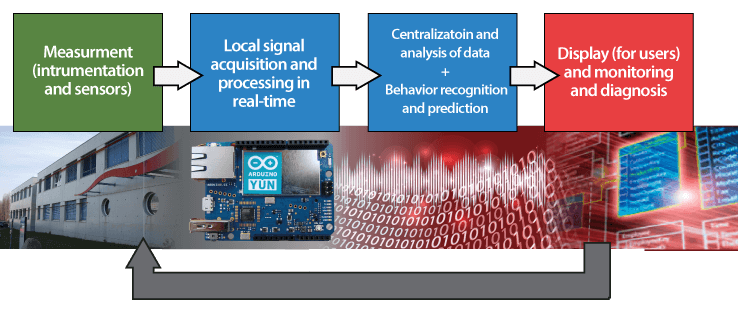
1. Record, analyse and apply machine learning algorithms (classification, anomaly detection, behavior prediction) on environmental data (temperatures, relative humidity, energy consumption, average active power, etc...)
Smart sensors based on:
- Arduino
- Raspberry Pi
- ESP8266 (ESP-07S)
An example of energy prediction implementing Deep Learning and RNN using Keras and Tensorflow on publicly available data can be found here: Energy Prediction Notebook Example.

2. Proposed an Intelligent System for Smart Buildings using Machine Learning and Semantic Technologies: a Hybrid Data-Knowledge Approach
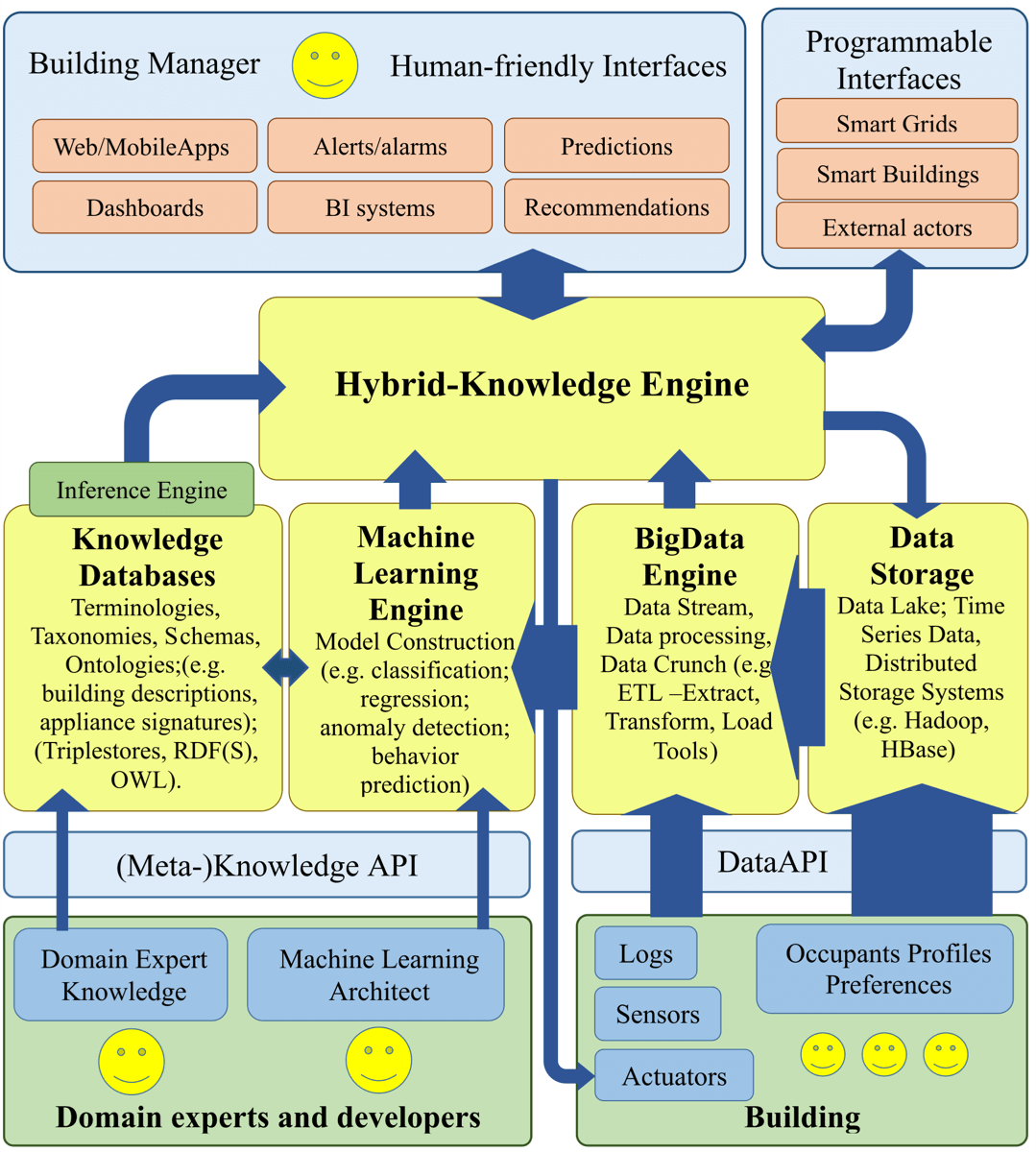
SCOLA - Système de Communication Ouvert et Ludique pour les Apprentissages
Product page: https://scola.education/
SCOLA is a PIA2 Project (Projet d'Investisement d'Avenir - 2e phase) in which our laboratory, ELLIADD, was a partner along with:
- university partners: Laboratoire ADEF (Apprentissage, Didactique, Evaluation, Formation), équipe OUN (Objets et Usages Numériques) – Laboratoire ELLIADD, équipe VORTEX – Laboratoire IRIT (Institut de Recherche en Informatique de Toulouse) ;
- intrustry partners: école ARIES (coordinateur du projet), AGIIR Network, Idées-3Com ;
- institution partners: Académie d’Aix-Marseille, Conseil Régional PACA, 4 conseils généraux (départements de l’Académie d’Aix-Marseille), Mairie de Marseille
Our main task was the creation and the development of the Evaluation Module (Fig.1). Having the learner traces recorded into an LRS (Learning Record Store), the objective was to construct meaningful evaluation reports regarding the performance of the learner. Learner's performance is then presented in terms of competences and knowledge acquisition as defined in the Socle Commun de Connaissances et de Competences. The module was developed using Java language and the Apache Jena library.
Keywords: learning systems, serious games, knowledge bases, learner model, learning evaluation, competences, learning traces, learning analytics, learning path, Experience API, Socle Commun de Connaissances et de Competences.
Used technologies: Java, Apache Jena, xAPI, Learning Object Metadata, RDF(S) - Resource Description Framework (Schema), OWL - Web Ontology Language, SPARQL (SPARQL Protocol And RDF Query Language), Reasoning, Inference, Rules, Semantic Web technologies.


ASLS - Active Semantic Learning System (Système Active et Sémantique d'Apprentissage)
The Active Semantic Learning System consists of multiple elements (e.g. learning entities modeling, data annotation, ontologies, inference engine, semantic kernel) presented is my thesis (defended in 2014 at University of Franche-Comté). The thesis can be found at http://www.theses.fr/2014BESA1008 and the presentation here.
Keywords: active learning systems, knowledge engineering, semantic modeling, learner model, learner profile, personalized learning, learning entities modeling, ontologies, RDF(S) - Resource Description Framework (Schema), SPARQL (SPARQL Protocol And RDF Query Language), OWL - Web Ontology Language.
Used technologies: Java, Apache Jena, Google Web Toolkit, Learning Object Metadata, RDF(S), OWL, SPARQL, Reasoning, Inference, Rules, Semantic Web technologies.
The system is based on a three-tier architecture as shown in Fig 1.
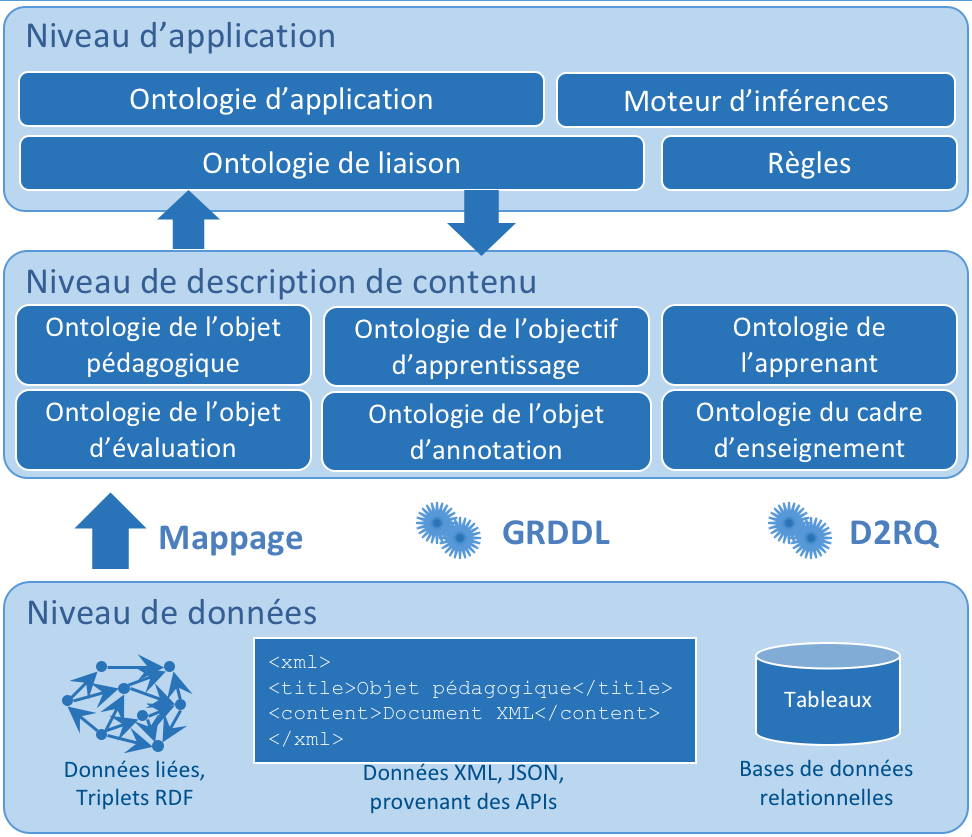
The Learner Profile ↔ Learning Object Adequacy is computed using the Euclidian Distance on various dimensions of the learning object and the learner profile. As a further enhancement, we consider learning the weight of each dimension using an attention-based neural network algorithm.
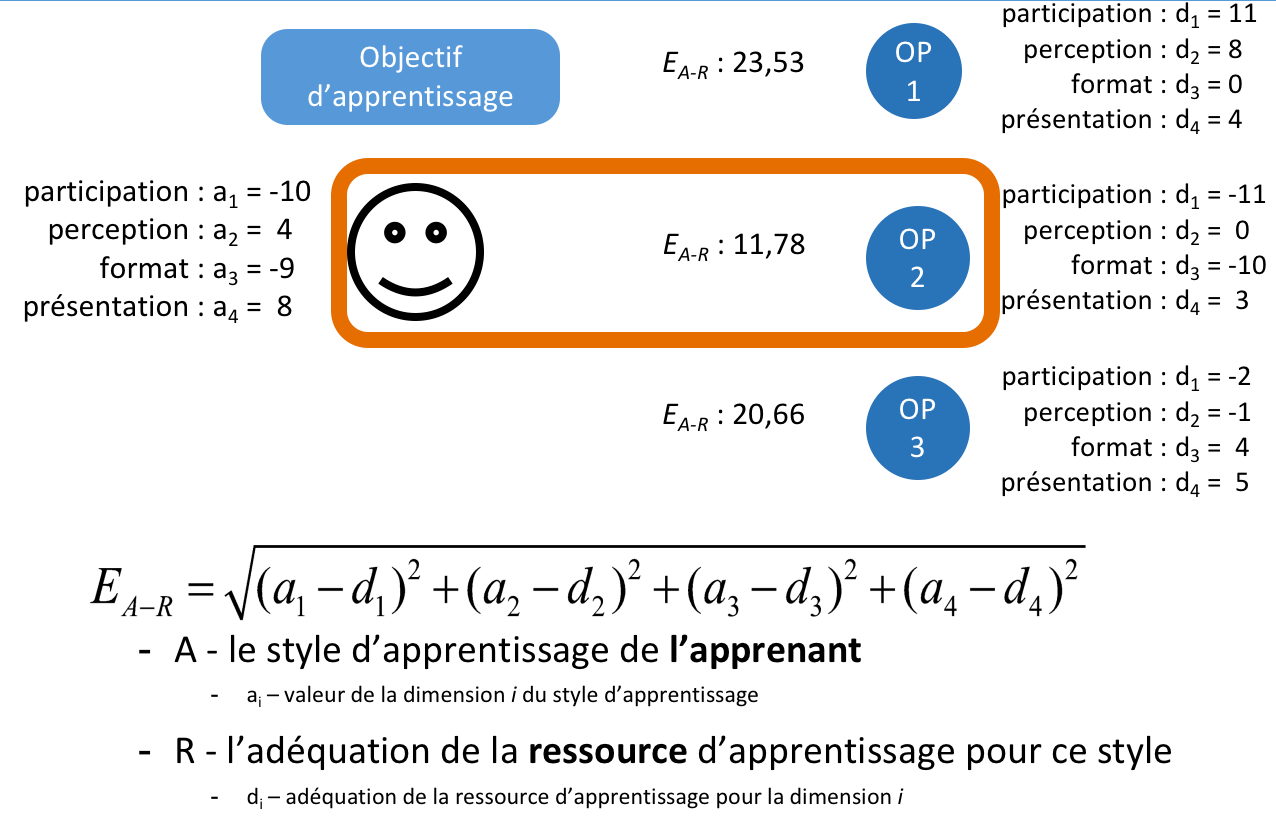
The ASLS allows the content creator de modify and specify metadata related to objects in the system (learning objects, evaluation objects, etc.) and provides an interface for that metadata editor.
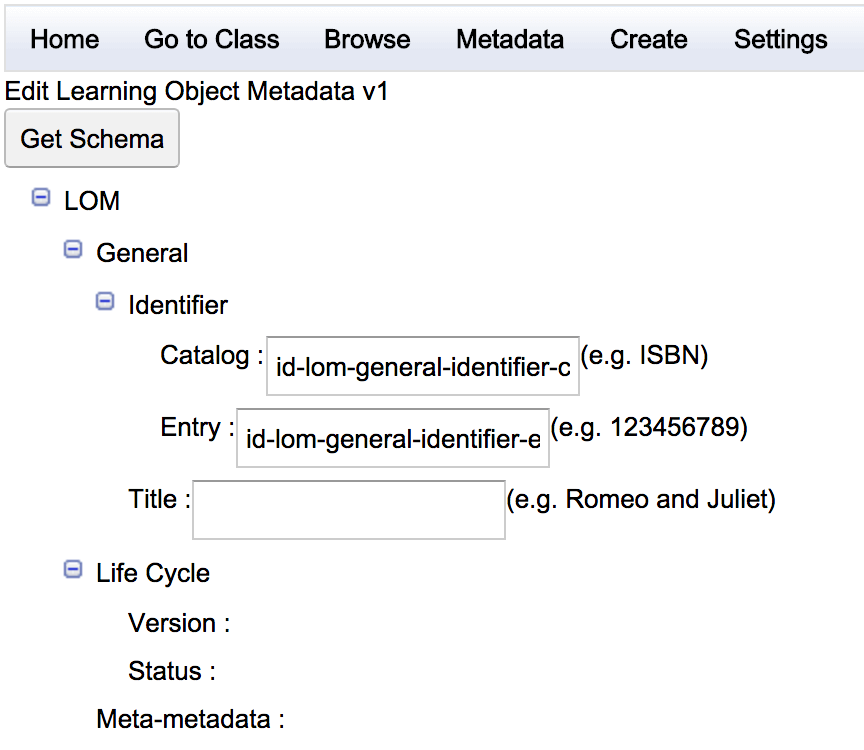
As a prototype, the ASLS interface provides the user with direct access to multiple levels of depth when configuring the learning path of a learner.

Home Smart Home - Personal project
This project consists on measuring general indoor and outdoor environmental variables (temperature, humidity, air quality, presence detection), as well as connecting some specific objects from the house (e.g. electric radiator) in order to analyse, predict, automate and enhance their energy efficiency. The objective is to enhance the efficiency of energy consumption by applying Machine Learning Algorithms on consumption data (e.g. energy) correlated with behaviour data (e.g. presence detection, temperatures).
Keywords: intelligent systems, machine learning, neural networks, deep learning, Internet of Things, Big Data, semantic technologies, building ontologies (BIM), description logics, reasoning, time-series data, time-series analysis.
Used technologies: Apache Hadoop, HBase, OpenTSDB, Grafana, NodeJS, Python, Tensorflow, Keras, MQTT, Semantic Web technologies, RDF(S), OWL - Web Ontology Language, SPARQL
At the time, the system is recording multiple measurements from various sensors connected to Raspberry Pi and ESP8266 (ESP-07S) based devices. These measurements includes:
- Outdoor Temperature
- Temperatures, humidity and air quality on various indoor spaces (bedroom, kitchen, office, etc.);
- Instant Electrical Power Consumption (General and on some electrical radiators);
- Electrical Energy Consumption (General and on some electrical radiators);
Multiple sensors are connected to a Raspbery Pi that is running a NodeJS code and log multiple measurements every few seconds.
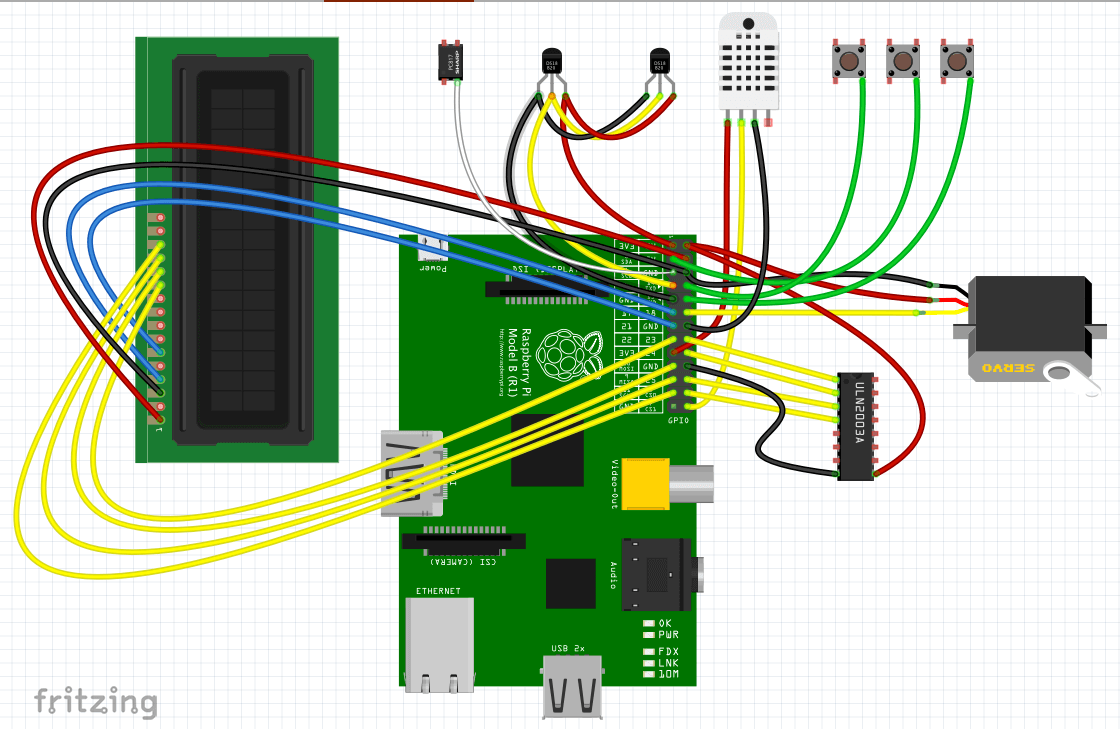
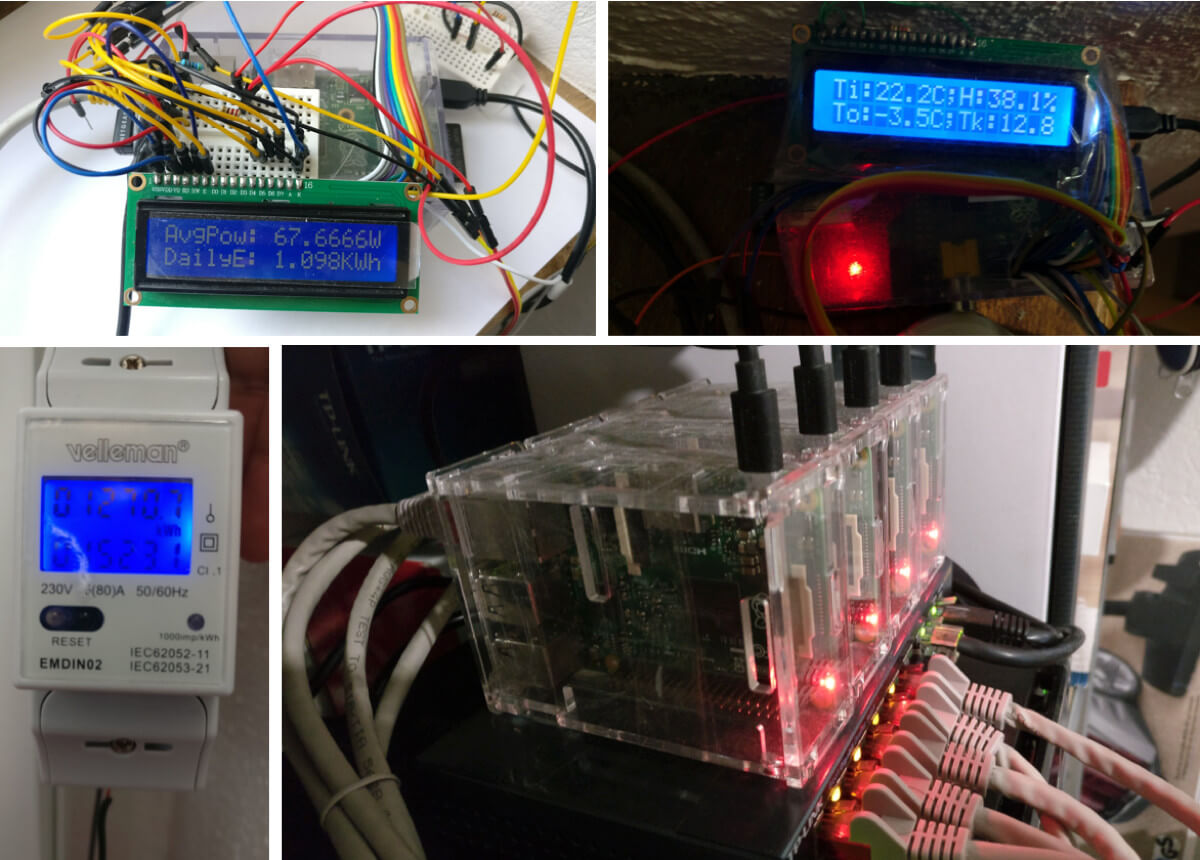
I made publicly available two real-time measurements: (1)the outside temperature and (2)the grid power voltage as measured in Anjoutey, France. These measurements are recorded using various sensors (temperature - DS18B20; power and energy - PZEM-004T) connected to Raspberry Pi and ESP8266 devices respectively.
These measurements can also be accessed at https://grafana.szi.fr (where you can select different periods of time). Apache Hadoop, HBase, OpenTSDB and Grafana run on a cluster of 4 Raspberry Pi(s). Loading time is impacted by the selected period of time.
PiCar - Self-driving Raspberry Pi based car - Personal project
The objective is to provide self-driving capabilities to the car using only two types of sensors:
- RaspberryPi Camera
- Ultrasound sensor (e.g. HC-SR04)
Used technologies: NodeJS, WebSockets, Python, Tensorflow, Keras
Keywords: intelligent systems, machine learning, computer vision, neural networks, deep learning, convolutional neural networks, self-driving car.
A Raspberry Pi based self-driving car.
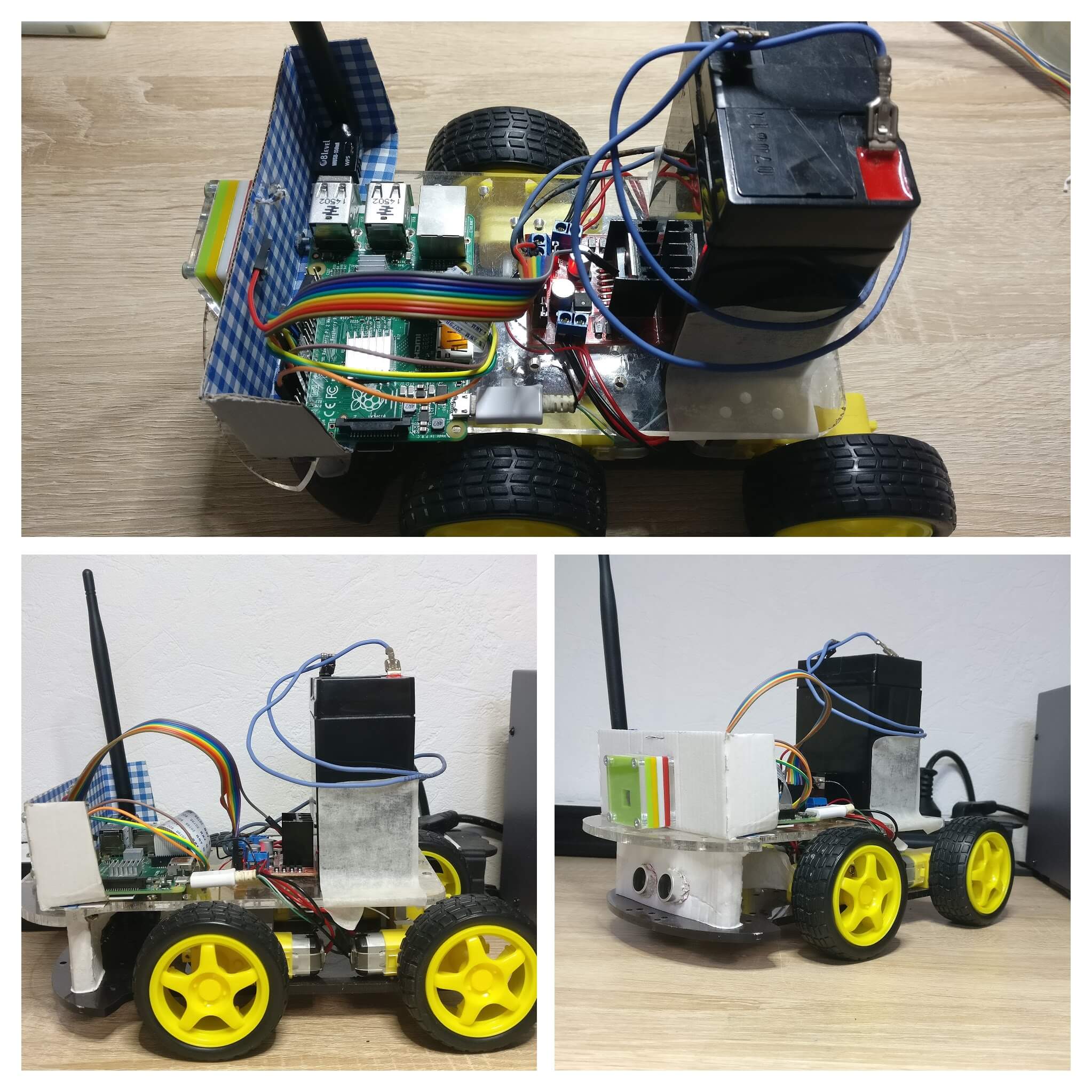
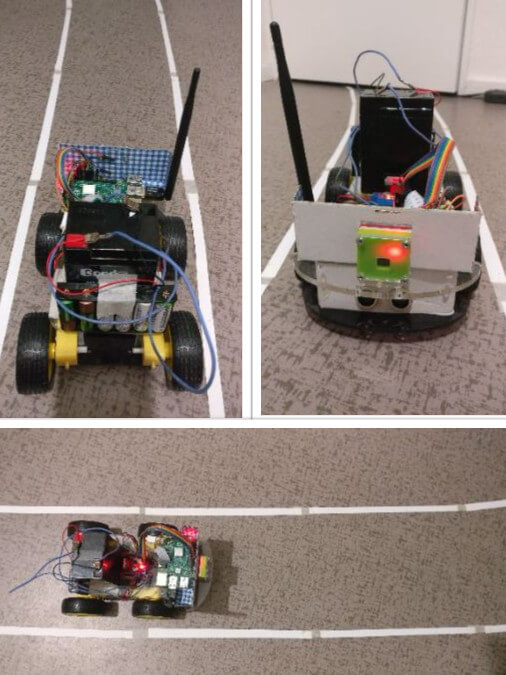
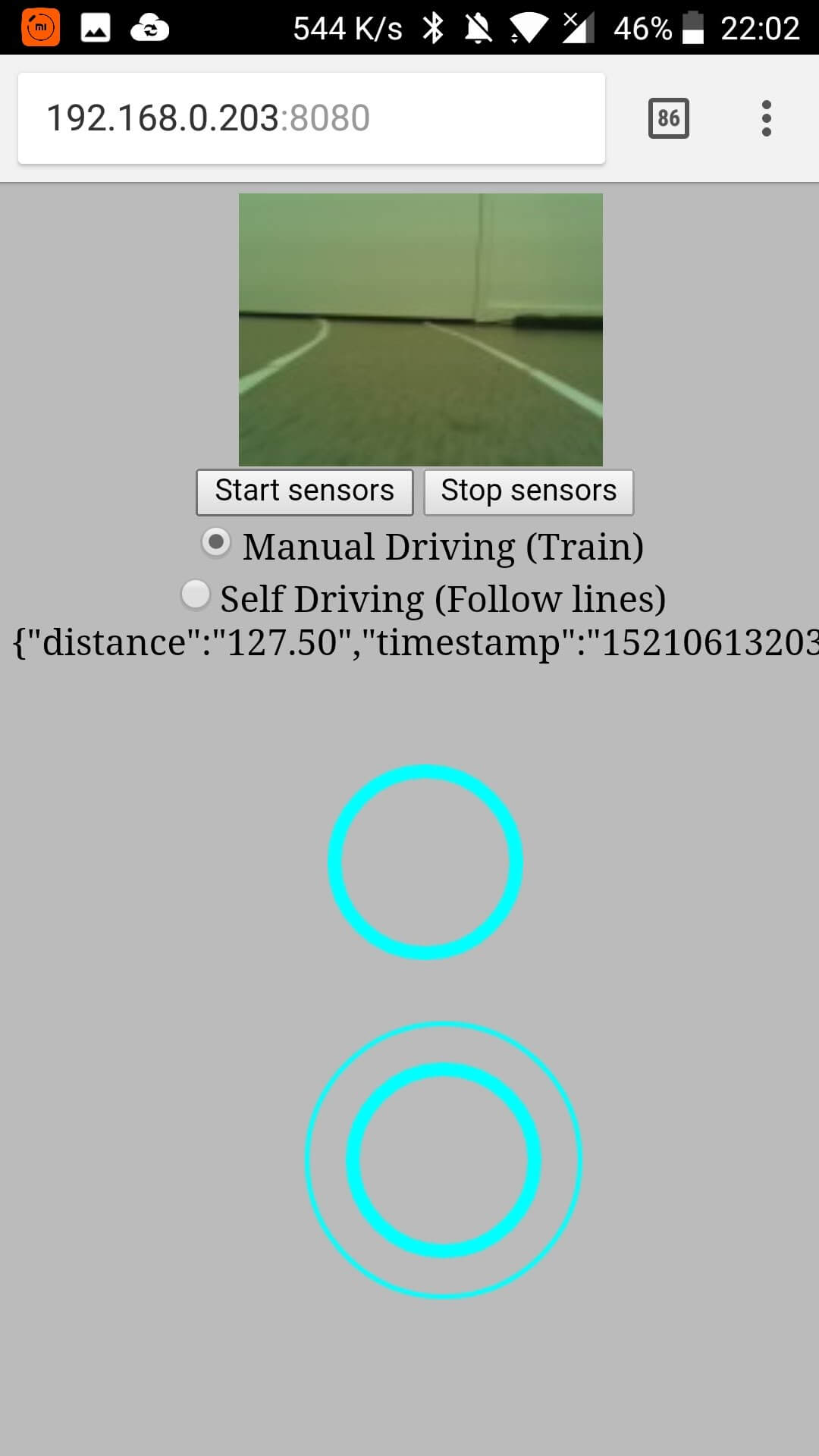
Using software to compensate various hardware differences.
Resources
- https://selfdrivingcars.mit.edu/ - MIT's Lex Fridman Course on Deep Learning for Self-Driving Cars
- https://selfdrivingcars.mit.edu/deeptraffic/ - DeepTraffic
- http://cs231n.github.io/ - CS231n Convolutional Neural Networks for Visual Recognition
Publications
- Balog-Crisan, R., I. Roxin, and I. Szilagyi. “Ontologies for a Semantic Quiz Architecture.” In Advanced Learning Technologies, 2009. ICALT 2009. Ninth IEEE International Conference On, 492–494, 2009.
- Domenget, J.C., I. Szilagyi, and F. Greffier. “Web Sémantique et Système Actif d’apprentissage: Apports d’un Wiki Sémantique,” 2010.
- Greffier, Françoise, Ioan Szilagyi, and Jean-Claude Domenget. “Pour Des Parcours Personnalisés via Un Système Actif et Sémantique d’apprentissage,” 2011.
- Roxin, Ioan, Ioan Szilagyi, and Radu Balog-Crisan. “Kernel Design for Semantic Learning Platform.” In Editlib.Org, 1190–1194, 2009. http://www.editlib.org/pv/31638.
- Szilagyi, I., F. Greffier, and J.C. Domenget. “Apprentissage Personnalisé via Le Web Sémantique,” 2011.
- Szilagyi, I., and I. Roxin. “Model for an Active Semantic Learning System.” In IADIS International Conference E-Learning, 247–250, 2010.
- Szilagyi, Ioan, Radu Balog-Crisan, Ana Roxin, and Ioan Roxin. “Ontologies and Knowledge Aggregation in the Active Semantic Learning System.” In 2011 IEEE 11th International Conference on Advanced Learning Technologies, 388–392. Athens, ATLANTA, USA, 2011. https://doi.org/10.1109/ICALT.2011.123.
- Szilagyi, Ioan, Radu Balog-Crisan, and Ioan Roxin. “Kernel for a Semantic Learning Platform with Adapted Suggestions.” In 2010 10th IEEE International Conference on Advanced Learning Technologies, 400–402. Sousse, Tunisia, 2010. https://doi.org/10.1109/ICALT.2010.115.
- Szilagyi, Ioan, and Ioan Roxin. “Learner Ontology for the Active Semantic Learning System.” In 2012 IEEE 12th International Conference on Advanced Learning Technologies (ICALT), 393–394. Rome, Italy, 2012. http://ieeexplore.ieee.org/xpls/abs_all.jsp?arnumber=6268130.
- Szilagyi, Ioan, and Patrice Wira. “Ontologies and Semantic Web for the Internet of Things-a Survey.” In Industrial Electronics Society, IECON 2016-42nd Annual Conference of the IEEE, 6949–6954. IEEE, 2016. http://ieeexplore.ieee.org/abstract/document/7793744/.
Projects list ⇧